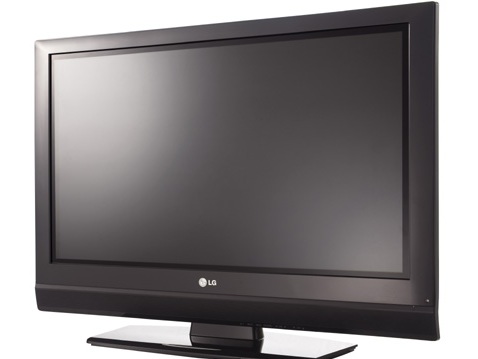Secrets of a TV reviewer (Part 2)
The insider's guide to choosing a good telly

In the first part of this article, I looked at the basics of TV reviewing – what connections give you the best picture, why quoted contrast ratios don’t really matter and why picture processing can be the difference between a good TV and a great TV.
In this second part, we’ll move beyond TV spec sheets and take a look at the actual testing procedure. When I review televisions, I use a variety of scenes from a variety of sources that I know like the back of my hand.
My particular favourites include the opening 20 minutes of Star Wars: The Revenge of the Sith recorded from Sky HD; the House of Blue Leaves massacre sequence in Kill Bill Volume 1; various parts of the first Pirates of the Caribbean movie on Blu-ray; plus the opening credits, casino scenes and the whole Venice sequence in Casino Royale, again on Blu-ray.
Good TV channels to test a TV include Sky News with its scrolling news ticker, and BBC One, which has a tendency to look a little blocky on the Freeview service.
Given that I’ve watched the same movie scenes countless times on countless TVs, I can usually tell pretty quickly how one TV compares against another.
Obviously most of you reading this won’t have the benefit of having tested literally hundreds of TVs, so you won’t be able to draw on such comparative knowledge. And you also won’t have access to the piles of extremely expensive electronic measuring systems TVs are subjected to once I’ve finished my subjective tests.
Picture quality
Get daily insight, inspiration and deals in your inbox
Sign up for breaking news, reviews, opinion, top tech deals, and more.
But what you certainly can do, assuming you can persuade a shop to let you test a few TVs for size, is look for obvious problems/strengths along the lines described below:
- Contrast. Look for bright whites without any green, pink or blue in them, and blacks that don’t look washed out, grey and/or devoid of shadow detail.
- Colours. How bright are they? How solid do they look? How noiseless are the edges? How ‘dotty’ are they? How natural are the skin tones?
- Fine detail. Look for how much HD texture a screen produces. Does a tree look like a green lump, or can you really see individual leaves?
- Edges. Check for ghosting, bright ‘halos’, and jaggedness.
- Motion. Check moving objects for smearing or blurring; trailing echoes; jerkiness; and fizzing, dotty noise.
- Image artefacts. Look for blockiness, chunky colour bands, grain, smearing, dot crawl… anything that looks like it’s added by the TV’s technology or digital processing.
- Screen reflections. A particularly glassy, reflective screen really can be difficult to watch, especially if the place your TV is going to sit is in sunlight. So try and look for screens that use filter technology to reduce the amount of ambient light they reflect.
- Viewing angle. Check how badly a picture deteriorates or greys out if viewed from the sides.
Of course, good picture quality is only one element of a good TV. Audio quality shouldn’t be underestimated – poor speakers can ruin the viewing experience.
Bass response
Here’s what I look for from a TV’s sound. First, there’s bass response, as in the depth of bass achieved. You need to decide whether the bass is too dominant, and if the bass causes distortion in the speakers or rattle in the cabinet.
Next, there’s mid-range response, with a particular focus on how vocals sound. Do vocals become lost during action scenes? Does the vocal tone sound believable, or is it sibilant or 'boxy'? Does the mid-range sound compressed thanks to shortages of bass and treble extension? Is there enough power in the speaker system to allow the mid-range to open up for loud action scenes?
Third, consider subtlety – ie how good a TV is at picking out and reproducing more subtle sound effects in a soundtrack. Fourth there’s what I call soundstage width. Does the soundstage escape the confines of the TV to deliver a more immersive viewing experience? Is the soundstage deep as well as wide? And is the sound cohesive, or do elements sound fractured and detached from the picture?
Finally, I focus on trebles: do they sound clear, or are they overwhelmed by the mid-range and bass? Do they sound harsh on the ear at high volumes, or are they well-rounded?
Once all this lot has been assessed, I usually turn off the TV and go and do something less boring instead, as the old ‘Why Don’t You?’ boys used to say.
And before you all start thinking my job sounds like a dream ticket, consider this: I have to watch daytime TV hour after hour, day after day after day. Terrifying, isn’t it? Shudder…
John Archer is the lead TV reviewer for What Video & High Definition TV and Home Cinema Choice
John has been writing about home entertainment technology for more than two decades - an especially impressive feat considering he still claims to only be 35 years old (yeah, right). In that time he’s reviewed hundreds if not thousands of TVs, projectors and speakers, and spent frankly far too long sitting by himself in a dark room.
